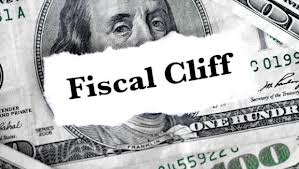Rent vs Buy? Pursuing Home Ownership
 Buying a home vs. renting is a big decision that takes careful consideration, as most mortgage consultants will agree. But the rewards of home ownership are great. For many years, purchasing real estate has been considered an extremely profitable investment. It is an achievement that offers a sense of pride, financial stability and potential tax advantages.
Buying a home vs. renting is a big decision that takes careful consideration, as most mortgage consultants will agree. But the rewards of home ownership are great. For many years, purchasing real estate has been considered an extremely profitable investment. It is an achievement that offers a sense of pride, financial stability and potential tax advantages.
Yes, there are certain responsibilities associated with owning a home. Landlords will often argue the benefits of renting, and for obvious reason. If you are renting, you’re helping them make their mortgage payment.
The numbers are staggering if you look at it this way. If you are paying $1,000 per month for an apartment, and you know your rent will increase 5% every year, then over the next five years you will pay your landlord $66,309. If you are currently renting a house, you may be paying much more than that each month. Either way, you gain no equity by shelling out this monthly housing expense and you certainly won’t benefit when the property value goes up!
However, if you were to purchase your own home or condominium, you would be on your way toward building equity. By choosing a fixed-rate loan program, you can have the comfort of knowing your monthly mortgage payment will never go up. In fact, you would have the option of refinancing to a lower interest rate at some point in the future should interest rates drop lower than the rate you’d currently be locked in at, and this would cause your monthly mortgage commitment to go down.
Not only would your own home give you added space, your own back yard and overall privacy—home ownership would also give you some tax advantages. Depending on your tax bracket, owning a home is often less expensive than renting after taxes. Interest payments on a mortgage below $1 million are tax-deductible. Your mortgage consultant should help you evaluate the tax advantages of various loan scenarios. Share this information with your tax consultant to glean feedback and recommendations.
To find the loan program that is right for you, your mortgage consultant will need to evaluate your monthly household income, current assets and savings, as well as any monthly obligations you may have for credit card payments, car payments, child support, etc. These pre-qualification factors, along with the report of your credit score, will determine how much house you can afford and what interest rate you will pay for financing. It is also important to let your mortgage consultant know what your future goals are, because this will help narrow down which loan option is the best fit for your long-term needs.
There are many different types of loan programs available, including “low”down payment mortgage programs. The most common and beneficial loan for people buying their first home is the FHA loan, which only requires a 3.5%down payment. In addition, FHA allows a seller to cover up to 6% of a buyer’s closing costs which really helps decrease the amount of money it takes to buy a home. Many people also don’t know that FHA allows the lowest credit scores of any loan available today, only needing a 640 score in most cases.
If there is any time to buy it is NOW! Why? Because home prices are on the rise; don’t miss this opportunity to take advantage of the current market and low interest rates.
The Velocity of Money
If you’ve been watching the economic news, you’ve probably noticed that market experts and traders have been keeping a close eye on the Commerce Department’s Personal Spending and Personal Income reports. Obviously, those reports provide insight into the health of our economy, but did you know they also influence home loan rates? That’s right, personal spending can actually influence the interest rates that are available when you purchase or refinance a home.
Here’s why. It has to do with something called the velocity of money. Even though the government keeps pumping money into the system, nothing happens until that money is spent or lent – and passes from one hand to another or one business to another. The speed at which this money passes between parties is called the velocity of money.
With the job market still very sluggish, consumers aren’t spending much money these days, and businesses are still reluctant to spend money to make investments in their business. With the present velocity at low levels, inflation remains subdued and that’s good for home loan rates. That’s because rates are tied to Mortgage Bonds and inflation is the archenemy of Bonds, so low inflation is good for Bonds and rates. However, once velocity increases, the excess money in the system will cause inflation – which is bad for rates, since even the slightest scent of inflation can cause home loan rates to worsen.
While we certainly want to see better economic recovery news in the near future, we have to remember there’s an inverse relationship between good economic news and Bonds and home loan rates. Weak economic news normally causes money to flow out of Stocks and into Bonds, which helps Bonds and home loan rates improve. Strong economic news, on the other hand, normally has the opposite result.
Currently, home loan rates are at a historically low level, but that situation won’t last forever. That means now is an ideal time to purchase a home or refinance before the velocity of money – and rates – change. If you or anyone you know would like to learn more about the current economic situation and how to take advantage of historically low home loan rates, then please contact me.
The Fiscal Cliff: The Basics
It’s safe to say that by this point, we’re all aware of the fiscal cliff and its status as the elephant in the room. Everyone knows some sort of decision has to be made by the first of the year and it affects every taxpayer. As for the specifics, however, a sizable chunk of the population only has a vague idea, and often the media outlets reporting on the decision-making progress don’t go into detail.
The fiscal cliff’s roots go back to the Bush era, during which time tax cuts were implemented across a variety of areas. Back in 2011, in an effort not to stifle economic growth, the Obama administration extended the cuts until January 1, 2013. The United States’ current economic and fiscal climate, however, is making for an extremely difficult situation: growth is still feeble enough that levying the originally planned taxes would likely do serious damage, but further extending the cuts would exacerbate the already massive deficit.
Needless to say, both the economy and the deficit are politically charged issues, which is why Congress is cutting it so close to the January 1st deadline. Partisanship and negotiations aside, the options boil down to going ahead with the policy as it’s currently laid out, cancelling the scheduled tax increases and spending cuts, or compromising in such a way that doesn’t address the budget issue as comprehensively but that would negatively impact growth less. It’s a very delicate balance complicated by a colossal number of variables, which is why Congress has been putting off the decision for about three years.
If the tax increases and spending cuts go into effect as originally planned, analysts predict that GDP would decline by 4%, officially landing the U.S. back into a recession, and that unemployment would increase by nearly 1%. Consumption spending, which is particularly important when it comes to sustaining growth, would likely take a hit of around $1 trillion. On the other hand, the deficit as a percentage of GDP would be reduced by half, which, given the budget trends, would be a welcome change indeed.
If you have any questions about the fiscal cliff and how it may impact your home loan situation, please don’t hesitate to contact me
Economic Market Update

Economic New Light Today
Economic news was light today with just a report from the Labor Department on the jobs market. Americans filing for first time unemployment benefits fell by 31,000 to 292,000 in the latest week. This was the lowest level since April of 2006. However, an official from the Labor Department said that the decline was due in part to two states not reporting all of their claims because of recent updates to computer systems.
30 – Year Fixed Conventional Mortgage Unchanged
Freddie Mac reported today the average rate for a 30-year fixed conventional mortgage is unchanged at 4.57%. However, to obtain that rate a potential borrower would have to pay 0.7 in points/fees. Due to the higher rates, the refinance end of the business has begun to slow down a whopping 71% since its recent peak the week of May 3, 2013.
Foreclosures Decline
Over in the foreclosure front, RealtyTrac reported yesterday foreclosure filings plunged by 34% year-over-year in the month ending in August. The decline was due in part to a rise in home prices and a pickup in job growth combined with less troubled loans at levels not seen in eight years. A RealtyTrac spokesperson said the “foreclosure flood waters have receded” in most parts of the country, but towns continue to clean up the damage that was left behind.
Jobs Report as Expected?
America, the numbers are in and have been counted…and they weren’t that good. The Labor Department reported this morning that employers added 169,000 jobs in August, below the 177,000 expected. In addition, the Labor Force Participation Rate (LFPR) fell to the lowest level in 35 years to 63.2%. The LFPR measures the number of people who are either employed or are actively looking for work.
Within the report, the Unemployment Rate fell to its lowest level (7.3%) since December of 2008 and it could be due to people dropping out of the workforce. For June and July, revisions were a total of -74,000 bringing June to 172,000 from 188,000 and July to 104,000 from 162,000. In the private sector, employers added 152,000 jobs, below the 180,000 expected.
The weaker than expected jobs report and the revisions lower will be closely scrutinized by members of the U.S. Federal Reserve for any decision on tapering the current Bond purchase program. The program is designed to promote economic and job growth. To do this, the Federal Reserve is purchasing $85 billion per month in Bonds in an effort to stimulate lending, which in turn would spur on spending.
Market Update – August 27, 2013 – Stock Prices Lower
The tensions in Syria are pushing Stock prices lower today and is shifting investing dollars over into the Bonds markets. U.S. allies are readying plans for an air strike against the nation after 100,000 people have died and 1 million children have become refugees.
Over in the housing sector, the Case Shiller Home Price 20-city Index rose by 12.1% in the year ended in June, just below the 12.2% registered in May. From May to June there was a 2.2% increase, but that is down from the 2.5% recorded from April to May. The report signals that the housing recovery continues, but at a slower pace.
Consumers remained optimistic in August despite the growing debt ceiling woes and as the fed readies to ease back on stimulating the U.S. economy. The Conference Board reported this morning that the Consumer Confidence Index rose to 81.5 in August from the 81.0 recorded in July. A spokesperson for the Conference Board said consumers were moderately more upbeat about business, job and earnings prospects
Market Update August 5, 2013
There has been some good news and bad news in the past month if you are a potential home buyer or looking to refinance your current home. The bad news is that home loan rates on the 30-year fixed conventional mortgage have gone from 3.5% to around 4.5% in the latest survey.
The good news is that mortgage lending standards eased for the fifth consecutive month, reports the Mortgage Bankers Association (MBA). The MBAs Mortgage Credit Availability Index report, which analyzes data from AllRegs Market Clarity product, the MCAI escalated to an index score of 112.3 in July, rising 2.2% from 109.81 in June.
The service sector of the U.S. economy perked up in July expanding more than expected rising to 56.0 from the 52.2 recorded in June. Readings over 50 indicate more companies are expanding instead of contracting. Of the 18 industries that were surveyed, 16 reported growth last month. However, the employment gauge fell to 53.2 from 54.7.
Market Update August 2, 2013
 Strong economic data this morning has pushed the closely watched S&P 500 Stock Index to an historic record level of 1,700 today as investors shifted over to more riskier assets.
Strong economic data this morning has pushed the closely watched S&P 500 Stock Index to an historic record level of 1,700 today as investors shifted over to more riskier assets.
First up was a government report from the Labor Department that showed Americans filing for first time unemployment benefits declined by 19,000 in the latest week to 326,000, below the estimate of 345,000. That was the lowest level since January of 2008 as the jobs market continues to improve. However, seasonal factors increase in July due to factories opening and closing for periodic shutdowns for retooling.
Over in the manufacturing sector, the ISM Index surged to 55.4 in July, above the 50.9 recorded in June and was the highest level since June of 2011. Within the report it showed that the employment component rose by 5.7 points to 54.4. A reading above 50 indicates that the manufacturing economy is generally expanding; below 50 indicates that it is generally contracting.





